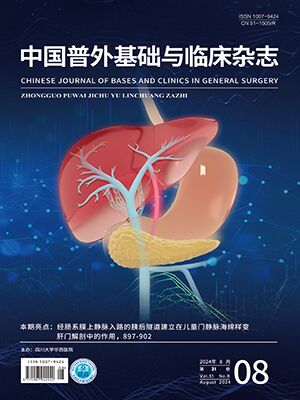【Abstract】ObjectiveTo measure the expressions of Fas/FasL mRNA in normal liver, adjacent non-cancerous liver parenchyma and hepatocarcinoma, and to explore the relationship between the expressions of Fas/FasL mRNA in those tissues and the hepatocellular carcinogenesis.
MethodsSemi-quantity reverse transcript-ploymerase chain reaction(QRTPCR) were performed to measure the relative quantity of the Fas and FasL mRNA expressions in normal liver (n=25), adjacent noncancerous liver parenchyma(n=40) and hepatocarcinoma(n=40).
ResultsThe relative quantity of Fas and FasL mRNA expressed in normal liver, adjacent non-cancerous liver parenchyma and hepatocarcinoma were 0.792±0.039 vs 0.245±0.043,0.857±0.031 vs 0.429±0.035 and 0.473±0.047 vs 0.185±0.041, respectively. The relative quantity of Fas mRNA expression in hepatocarcinoma was lower than that of normal liver tissue and adjacent non-cancerous liver parenchyrna (P<0.05). The relative quantity of FasL mRNA expression in hepatocarcinoma was also lower than that of normal liver tissue (P<0.05) and adjacent non-cancerous liver parenchyma (P<0.01), but its expression in adjacent non-cancerous liver parenchyma was higher than that of normal liver tissue (P<0.05).
ConclusionHepatorcarcinoma may escape the immune surveillance of the host, not only by means of reducing Fas expression, but also through adjacent non-cancerous liver parenchyma’s increasing expression of FasL to induce apoptosis of contact lymphocyte which highly expresses Fas.
Citation: LI Haiming,DOU Kefeng,LI Ren,ZHOU Jingshi,DI Zhenyu,ZHANG Fuqin.. Alteration of Fas/FasL mRNA Expression in Hepato carcinoma and Its Significance. CHINESE JOURNAL OF BASES AND CLINICS IN GENERAL SURGERY, 2005, 12(3): 284-286. doi: Copy




